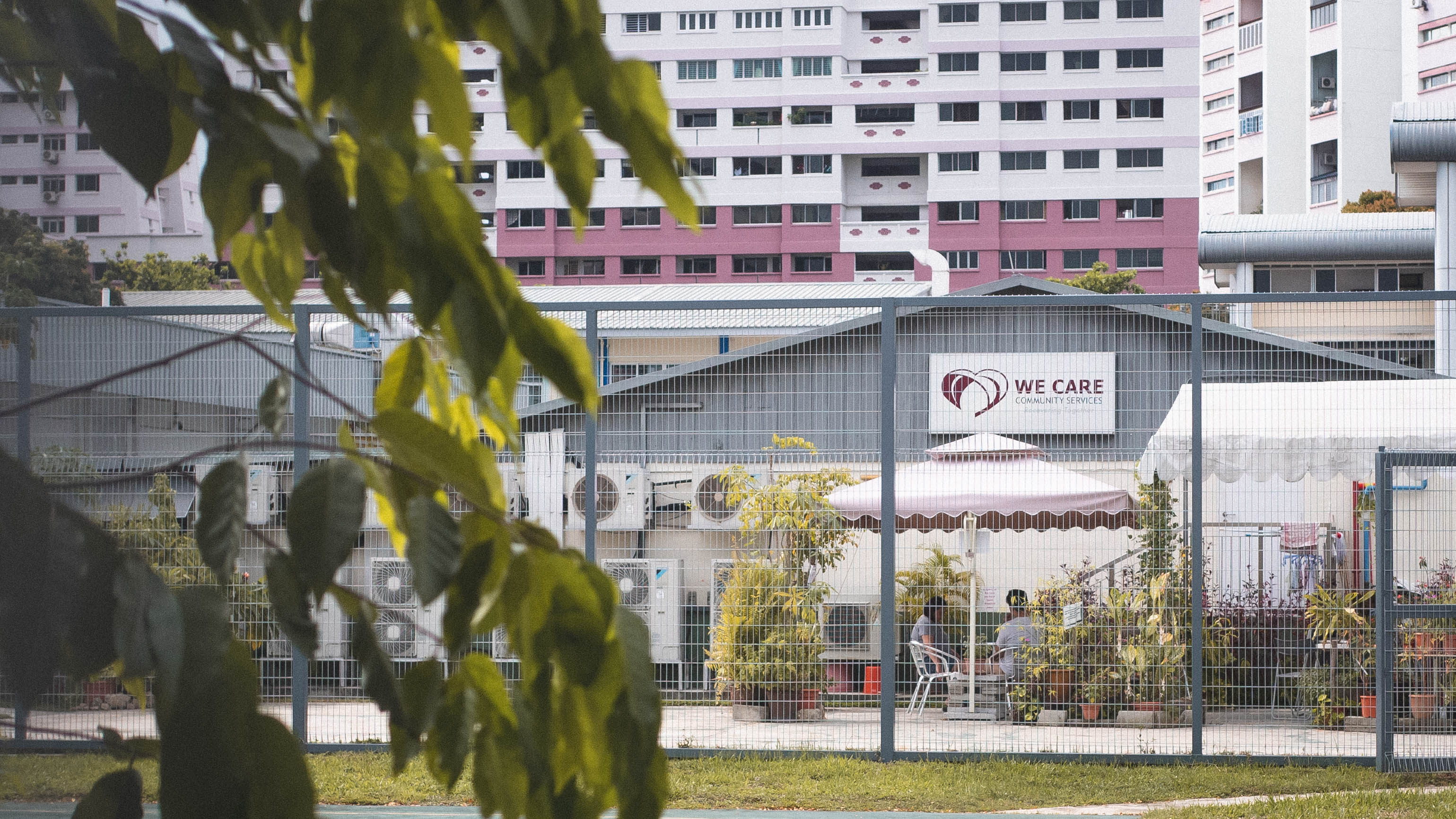To the casual observer, I’m what you’d call a smoker, not an addict. After all, most people associate the term “addict” with a very specific personality. We think of someone who can barely function, eyes glazed over as they inject themselves with yet another cocktail of toxic chemicals. We think of someone slumped over in a puddle of their own excrement, empty bottles of alcohol their only company.
Yet I know I’m probably one of them, so hello, my name is Justin, and I am an addict. I think.
Smoking was something I picked up as soon as I entered my 20s while nursing a broken heart. In a moment of recklessness, I accepted the cigarettes offered by a friend. In the 8 years since, smoking has been a way of coping with particularly stressful periods or something to do when I’m bored.
Yet there are also times I can go days without a puff, suffering no “withdrawal symptoms” as far as I can tell.
Naturally, this leaves me confused. I can’t be sure if my smoking is simply a bad habit or a more sinister addiction. So in order to better understand what addiction is and means, I met with Madam Tham Yuen Han, executive director of WE CARE Community Services, and Mr Andrew da Roza, its chairman. WE CARE is a non-denominational, non-government funded outpatient addiction treatment centre in Singapore.
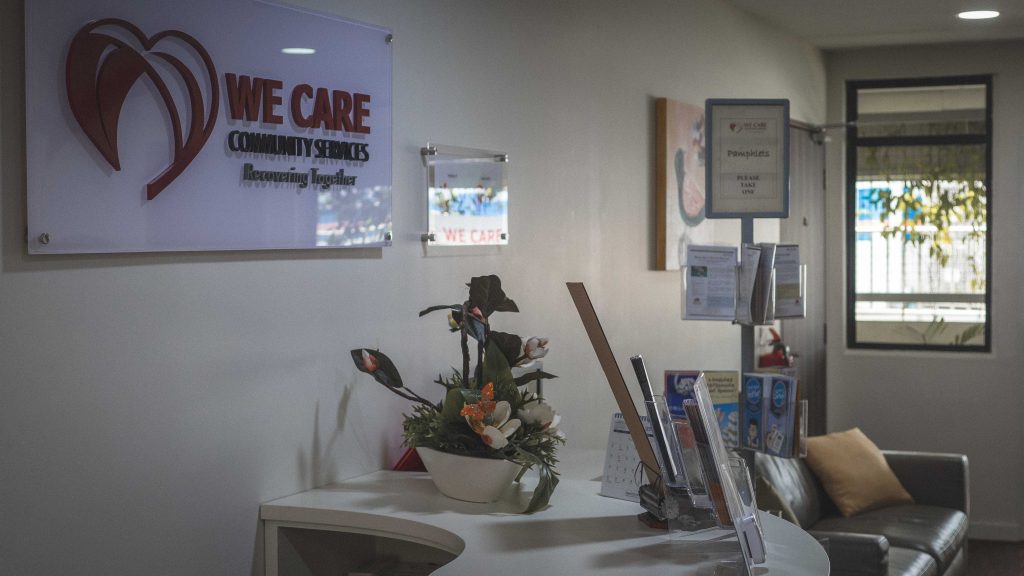
“We always say that no one chooses to become an addict,” Madam Tham tells me. The concept of an addict not having a choice in the matter is extremely tough to grasp, but once you understand what addiction does to the brain, everything makes sense.
You see, the brain registers all kinds of pleasure (money, sex, food, etc) the same way: by releasing neurotransmitters. This includes dopamine, which has a role in the release of other neurotransmitters: particulate beta-endorphins—responsible for the sensations of pleasure, release, and calm. Addictive drugs, however, cause a surge in this release, essentially flooding the nucleus accumbens (a cluster of nerve cells lying underneath the cerebral cortex) with these neurotransmitters. This is of course, known as the “high” addicts feel whenever they drink, pop a pill, or succumb to addictive impulses.
The hippocampus—the part of the brain associated with memory—remembers this rapid sense of satisfaction; the amygdalae—two almond-shaped clusters of nuclei deep within the brain’s temporal lobes responsible for learning—then creates a conditioned response to this stimuli.
In English, this means that drugs and alcohol cause our brains to release chemicals that make us happy. And because we remember how it feels, we go looking for it when it’s not there.
Notably, the level of neurotransmitters released by these addictive drugs is not anywhere near normal. In fact, it can be 5 to 10 times as much as what we get from natural rewards, which subsequently alters the reward circuit in our brain.
We’re wired to repeat pleasurable activities, and the flood of dopamine (contrary to popular belief, not a pleasure-causing chemical but one that helps us create associations between stimuli and pleasure) teaches the brain to seek these “shortcuts” at the expense of other, healthier goals and activities. Over time, the prefrontal cortex— responsible for decision-making and reasoning—changes.
Essentially, there are four systems at work. The first is the dopamine system—which triggers memory and action—and is involved in the pleasure-seeking and addiction rumination (triggers, cravings and urges). This system becomes increasingly hyperactive and hypersensitive over time, termed “salience”. The sensations of pleasure also become hypoactive. It wears out and less or no pleasure is derived from the addictive behaviour. This is known as “tolerance”.
The third system is a hyperactive stress response, which leads to the person seeking relief, or “longer-term withdrawal”. Finally, there is the immediate withdrawal from the drugs (usually a week or two/three) which are sensations and emotions that are the exact opposite of what the drug or behaviour initially felt like.
All of these systems talk to each other but have different effects and need to be treated in different ways.
“You might be extremely puzzled by someone who’s addicted to drinking and says that everyone has liver failure. Or that laypeople drink more than he does, even though he starts drinking at 8 in the morning and can’t stop. This is because the prefrontal cortex just isn’t all there. It’s been profoundly changed,” Mr da Roza tells me.

“To really recover and treat addiction, you can’t just treat the addictive symptoms alone. You have to look deeper beneath the surface and tackle the root of the problem. That’s why people stay in treatment and the recovery process is quite long. Here at WE CARE, we work with them to basically resolve that underlying issue, and to do so, long-term treatment and change is required,” Madam Tham says.
The recovery journey can even last a lifetime shares Mr da Roza, who himself has had previous struggles with addiction. Looking at the kind-faced, eloquent, well-dressed man in front of me, I’m astounded.
Prior to our meeting, he had sent me a copy of his resumé, on which his many outstanding credentials (LL.M Law, MA – Counselling, MSc Addiction Studies, to name a few) read like a shopping list of professional accomplishments. He looked nothing like the image I had of a typical addict.
As if sensing my initial disbelief, Mr da Roza rummages through his bag for a moment before showing me his 7-year chip. In my hands, the bronze coin signifying 7 years of sobriety feels heavier than it looks.
Mr da Roza tells me that one of the toughest problems addicts face is recognising that they have a problem in the first place. They have to see that their life has spiralled out of control and realise that they’re powerless over the substance and their behaviour. Then, they have to come to terms with the misery they’ve caused to themselves and others—all this, with a brain that’s already been rewired.
“Recognising that is very tough,” he says, but failing to do so would mean that there is no motivation for the addict to change. But once they come to that understanding, they can finally seek help and begin the process of recovery.
This is where WE CARE comes in.

At WE CARE, trained and qualified counsellors will do an initial assessment. Should the person’s level of addiction be severe, they would require medical treatment or intervention. At that point, they’re not ready for counselling, and WE CARE will refer them to a hospital to detox. If medical treatment isn’t required, counsellors will recommend non-mandatory programmes based on the severity of the addiction. These range from one-to-one counselling sessions, group therapy, and self-help support groups. There’s also a drop-in centre for clients who wish to escape environments non-conducive to recovery.
This initial assessment can sometimes be spread over several sessions, although one of the first things counsellors look for is a suicide risk.
Madam Tham shares that about 50% of addicts who walk through WE CARE’s doors seeking treatment have seriously contemplated suicide. She estimates that at least 70% of them—even if they didn’t immediately present with it—have had a past history of suicide risk.
“Thoughts of suicide is sadly very common with this population that we serve. That and self-harm. That’s another reason why we want to work with them. They’re not well understood,” she says.
But no matter how helpful WE CARE’s programmes might be, they wouldn’t be useful if the addict doesn’t trust the process—the second problem recovering addicts face according to Mr da Roza.
“Once they’ve found someone that can help, they have to surrender completely to that person’s best thinking. This means giving up all control and having complete faith in a system they might know nothing about. They have to put ego aside, not make excuses and just have faith in the recovery process.”
WE CARE does what it can to make their clients feel as comfortable as possible. This means that if an addict comes to them homeless, WE CARE will first help them find a roof over their head. They believe that clients will not be ready for counselling if they’re distracted or worrying about their basic needs. More often than not, this includes money, which is why WE CARE keeps treatment costs low without scrimping on the quality of their holistic services.
In fact, a significant number of their clients don’t pay because of their financial situation.
In addition to therapy and the various support groups, there’s also the wellness component in an addict’s journey to recovery. The morning I visited, it was qi gong. Other days, clients can attend art classes conducted by a professional artist who volunteers at the centre. Or do yoga. Or play sports.
All of this gives them some semblance of a normal life without their addictions.
“Take, for example, someone who’s fully committed to recovery. He’ll be attending all sorts of different programmes every day. If the home environment isn’t safe and they’re easily triggered because of strained relationships with family members, we’ll ask them to come to the drop-in centre. They can’t stay overnight but they can park themselves here if they want to. We have a safe and non-judgemental community here for them,” says Madam Tham.
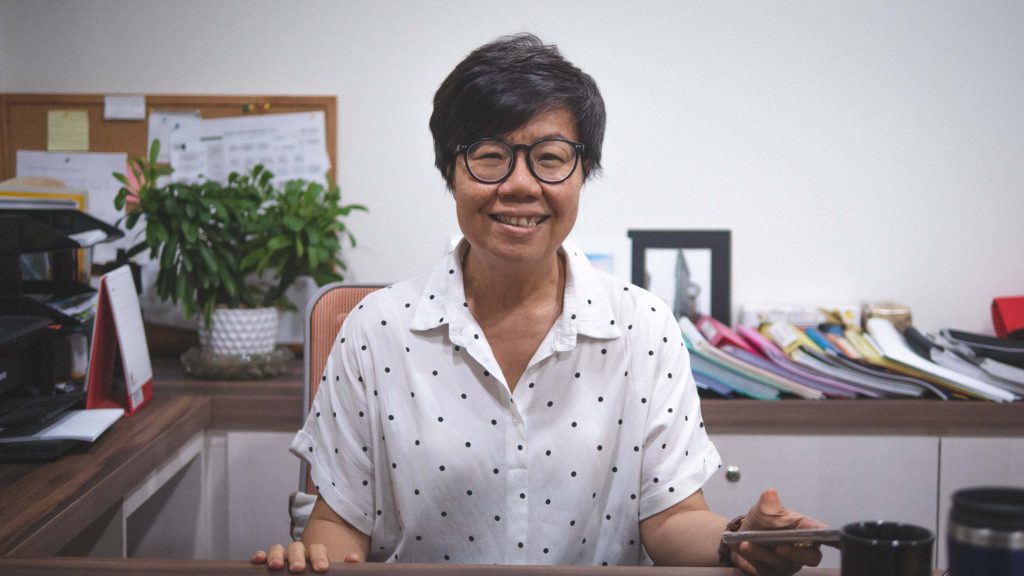
With the aim of reintegrating recovering addicts back into society, WE CARE taps a lot on volunteers to help with the non-counselling aspect of the work. They have job and life skill coaches on hand, and volunteers teach lower-functioning recovering addicts how to craft a resumé or CV.
Most heartening is the fact that addicts who are doing well and have recovered give back to the community. They’re known as “recovery buddies”, and serve as role models to newer members.
All in all, the road to recovery is by no means an easy one.
Whilst going for therapy and addicts also have to not only learn but put into practice the self-soothing tools (emotional regulation or “distress tolerance tools” using the Dialectical Behaviour Therapy vernacular) to manage the anxiety and depression that comes from withdrawal. Essentially, they have to learn self-care—something many people who deal with addictions have no experience with.
Lest they expose themselves to triggers, urges, and cravings that lead them back down the same path, they have to dramatically change their lifestyle forever. It’s a seismic shift in attitude and perspective.
“At the point where most addicts seek help, they’re already pretty desperate. It’s a decision you make because you’ve tried everything else and nothing’s worked. There’s no downside. Only a possible upside even if you don’t believe that upside is likely. But yes, you have to be in pretty bad shape,” Mr da Roza explains.
I’m reminded of a quote that has helped me get through the rough patches in my own life. It goes something like this: “When you hit rock bottom, the only place to go is up.”

The first is employment. The thing about WE CARE’s clients is that they’re not always the easiest people to provide therapy to.
“They’re in a lot of pain,’ Mr da Roza reminds me, before explaining how their agitation, disorganisation, and disputes with family members or the police can make the task of handling them extremely difficult at times.
As such, getting the right expertise into the centre is paramount. All of WE CARE’s counsellors might be qualified and trained professionals with their own areas of specialisation, but people like them are becoming harder to find.
This labour-shortage problem is also exacerbated by the increasingly heavy competition WE CARE finds itself in with hospitals and the Institute of Mental Health. As a non-government funded Volunteer Welfare Organisation (VWO), WE CARE is unable to provide a model salary or the same kind of benefits their competitors can, resulting in WE CARE being a less attractive place to work.
The core of this is, of course, their second major challenge: funding.
“There’s heavy competition for trained professionals from IMH, hospitals and other larger VWOs; and we find it hard to match the institutional salaries and benefits,” says Mr da Roza.
Since WE CARE isn’t affiliated to any government or religious organisation, getting adequate funding is always tricky. Like any other charity, they have to apply for funding and are required to meet deliverables. Sometimes, the programme-based funding gets approved and lasts for a maximum of three years. Sometimes, it only lasts for one. Whatever the case, they will unfortunately always end up back at square one.
WE CARE thus relies on sponsorships from corporations and individuals, which isn’t always ideal. Mr da Roza tells me that there’s a significant gap (generally between 200 to 300k ) every year between what they can get from the projects they deliver and the tote board, community chest, and NCSS funds. They have to find a way to make up that difference, whether through donations or fundraisers, failing which WE CARE won’t be able to continue operations.
When I ask Mr da Roza about donation figures, he smiles weakly, shakes his head, and tells me that they’re not at the level that WE CARE would like.
Unsurprisingly, the school of thought that addiction is a mental illness is still one that’s not attended by many. This is because we often think that addicts had a choice in their addiction.
And while perhaps they did, this is only in the beginning. At some point, the choice is taken from them.
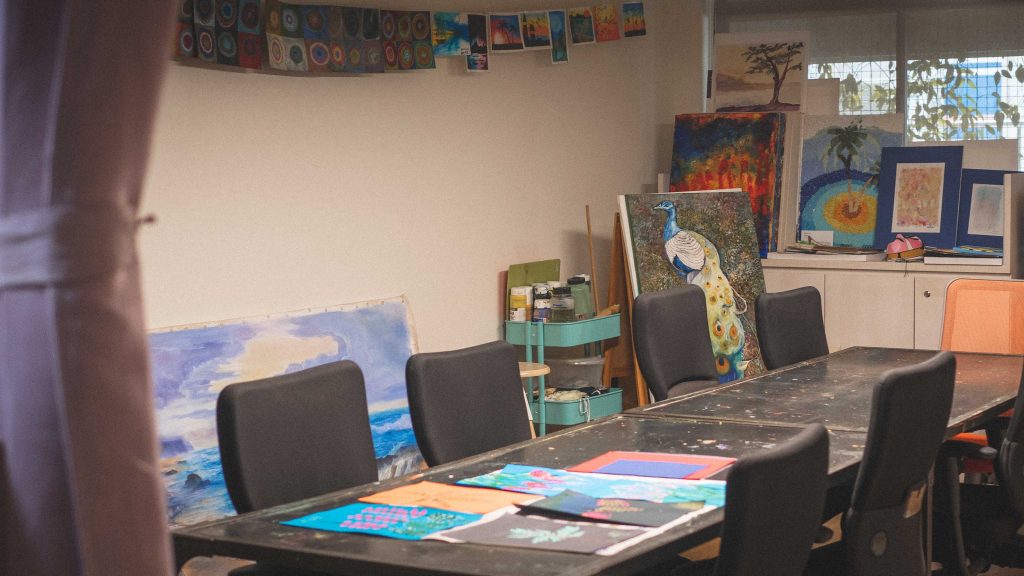
What the public often fails to realise is that there’s a crossover point from which impulsive behaviour becomes compulsive behaviour.
“People are very sympathetic towards children and the elderly, those with physical disabilities, and families that are in trouble. But when it comes to addicts, their rationale is ‘they chose to be like that’ or ‘you’ve spent so many months doing this behaviour, knowing it to be bad, so why should we help you now? You’ve crossed over to the dark side’ etc.
Which is all well and good. It’s logical. But the trouble is, the addict now has to be treated for the good of the community; for the good of their families; for the good of their employers. And unfortunately, he isn’t going to get out of the dark just by being put in prison because it doesn’t work that way. Addiction is a mental illness and has to be treated as such. They need the community.”
WE CARE’s emphasis on community-based recovery is in line with the government’s stance on drug rehabilitation, with MPs such as Mr Christopher de Souza and Ms Tin Pei Ling stressing the importance of rehabilitation and strong community support. Madam Tham and Mr da Roza both share that the government is very supportive of the concept, and remains firm about it.
But as always, people still have difficulty with the idea.
As such, WE CARE aims to educate the public on what recovery means and entails, despite their lack of deep pockets. Because they aren’t able to do as many events as they’d like, they have to be strategic about who they target. This means their awareness talks usually take place in educational institutions since they believe (for good reason) that the young are most vulnerable. Elsewhere, they also partner with many hospitals, ready to ensure that recovering addicts can continue their treatment after being discharged.
“We’d also like to educate people who are neutral or uncertain about addiction because there are so much they don’t know. And it’s important because recovering addicts need their help. Like depression; like anxiety; like diabetes, addiction is a manageable illness. Manageable for the rest of your life but manageable nonetheless” says Mr da Roza, smiling once again.
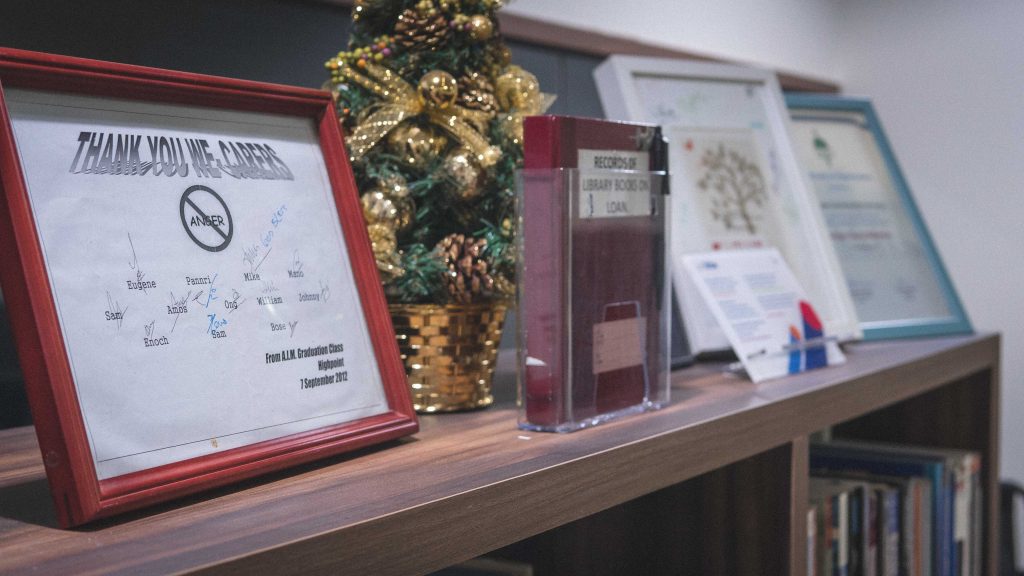
Everyone makes bad decisions at some point in their lives so unless you live in a glass house, don’t harp on their mistakes. Instead, offer a hand to help them climb out of that dark pit otherwise known as addiction.
In case you were still wondering at this point in my story, yes, I am an addict. And as it turns out, quitting smoking is actually more difficult than quitting heroin.
As Madam Tham explains, thanks to nicotine’s legality, we [smokers] are not locked up for simply carrying a pack of cigarettes around.
This, unfortunately, means that, despite the social stigma with smoking, attempts to quit are usually half-hearted. Unlike more hardcore addictions, there are no serious repercussions if smokers don’t quit. Smokers don’t see it as a problem and hence it is unlikely that we seek professional help. So we give ourselves time, forgetting that we fall deeper into our addictions with every passing second.
Given that smoking is such a difficult addiction to quit, perhaps more understanding and compassion can be shown towards smokers and addiction in general. For smokers such as myself, perhaps more options are needed.
But I think my time has come. It’s time to man up and face my problem head-on with a stronger mindset and greater determination. Maybe I’ll even look into alternative smoking products to slowly wean myself off smoking before quitting entirely.
And if all of that fails, luckily for me, I know I can always count on Madam Tham, Mr da Roza, and everyone at WE CARE for help.
After all, in the immortal words of Lennon and (Sir) McCartney: I get by with a little help from my friends.

